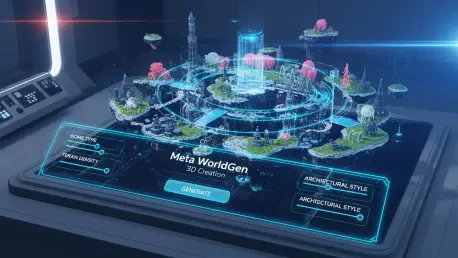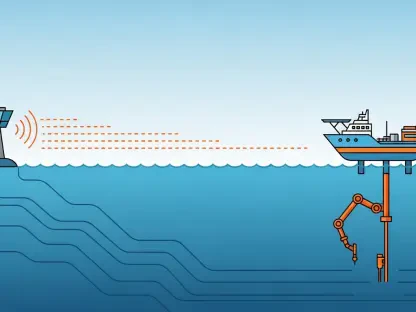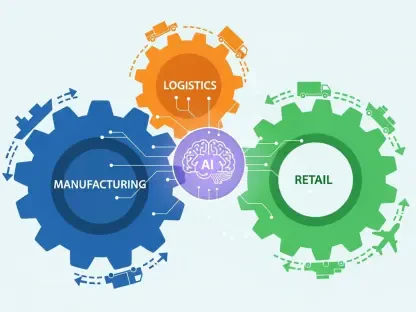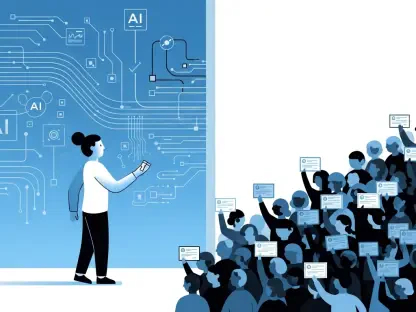Imagine a future where a single text prompt can conjure up an entire interactive 3D world in mere minutes, slashing through the painstaking hours of manual design that have long defined virtual environment creation. Meta’s WorldGen, a cutting-edge generative AI technology crafted by Reality Labs, is making this vision a reality. This innovative system is redefining the landscape of 3D modeling by automating the development of fully traversable and functional virtual spaces, offering a lifeline to industries such as gaming, enterprise training, and digital simulations. With traditional methods often requiring weeks of specialized labor, WorldGen’s promise of speed and accessibility is nothing short of revolutionary. By tackling the inherent challenges of building interactive environments, this technology is poised to reshape how developers and businesses approach spatial computing. Let’s explore the mechanics and implications of this transformative tool, delving into its capabilities and the broader impact it could have on digital world-building.
Redefining Speed and Accessibility in 3D Design
WorldGen’s most striking attribute is its ability to drastically reduce the time needed to construct 3D environments, a process that historically demanded weeks of meticulous effort from skilled artists. With the right hardware, this AI-driven system can generate a fully textured and navigable scene in approximately five minutes, a feat that opens up new possibilities for rapid prototyping and iterative design. Such efficiency is invaluable for industries where time-to-market is critical, allowing game developers to test concepts swiftly or training programs to simulate environments without delay. This dramatic compression of timelines not only cuts costs but also democratizes access to high-quality 3D content creation, enabling smaller teams or independent creators to compete with larger studios. The implications are vast, as WorldGen lowers the barrier to entry for crafting immersive digital spaces, fostering innovation across diverse sectors.
Beyond its remarkable speed, WorldGen ensures seamless integration with widely used platforms like Unity and Unreal Engine, making it a versatile tool for a broad audience. Its outputs are designed to be “game engine-ready,” eliminating the need for specialized rendering hardware or proprietary systems that often complicate the adoption of other AI-generated content. This compatibility means that developers, whether indie or part of large enterprises, can incorporate WorldGen’s environments into existing workflows without being tethered to a specific ecosystem. By avoiding vendor lock-in, the technology enhances flexibility, ensuring that users can adapt outputs to their unique needs. This accessibility underscores WorldGen’s potential to become a staple in 3D world-building, as it aligns with the practical demands of modern development pipelines, paving the way for broader adoption across creative and professional fields.
Balancing Automation with Creative Control
A key strength of WorldGen lies in its modular pipeline, which mirrors traditional 3D development processes through four distinct stages: scene planning, reconstruction, decomposition, and enhancement. This structured approach allows for human intervention at multiple points, ensuring that editors retain control over the finer details of a generated environment. For example, during the decomposition phase, individual elements like trees or structures can be isolated and adjusted without impacting the entire scene, addressing a common frustration with AI models that often produce uneditable outputs. This granularity empowers teams to tailor virtual spaces to specific requirements, blending the efficiency of automation with the precision of manual oversight. As a result, WorldGen serves as a collaborative tool, enhancing rather than replacing human creativity in the design process.
Furthermore, this flexibility in editing makes WorldGen adaptable to a variety of use cases, from crafting intricate game levels to simulating industrial settings for training purposes. The ability to refine textures during the enhancement stage or adjust layouts in earlier phases ensures that the final product meets both aesthetic and functional standards. Unlike fully automated systems that might leave little room for customization, WorldGen’s design facilitates a partnership between AI and human input, allowing for iterative improvements. Technical teams can tweak navigation paths or object placements to suit real-world applications, ensuring that the environments are not just visually coherent but also practical for interaction. This balance positions WorldGen as a forward-thinking solution, capable of meeting the nuanced demands of modern 3D content creation while preserving the artistic vision of its users.
Emphasizing Usability Over Visual Perfection
While some AI technologies in the 3D space prioritize photorealistic detail, WorldGen sets itself apart by focusing on functionality, ensuring that its environments are usable for interactive applications. By leveraging mesh-based geometry, the system supports essential features like physics and collision data, making it suitable for real-time simulations and gaming scenarios. It maintains consistent quality across expansive areas, up to 50×50 meters, which is critical for creating cohesive virtual spaces like factory floor digital twins or VR training modules. This practical focus ensures that the generated worlds are not mere visual spectacles but are equipped for user engagement, addressing a gap left by competitors who often sacrifice usability for aesthetic appeal. WorldGen’s approach reflects a growing industry trend of valuing operational integrity in early development stages.
Additionally, the emphasis on function over pure visual fidelity aligns with the needs of developers who prioritize working environments over polished appearances in initial phases. WorldGen enables teams to establish the structural foundation of a 3D space, focusing on interaction logic and navigation before investing in detailed aesthetics. This workflow efficiency allows for resources to be allocated toward high-impact tasks, such as designing user experiences or refining specific functionalities, rather than laboring over basic layouts. By handling the groundwork, WorldGen frees up creative energy for later-stage refinements, supporting a phased approach to development that resonates with current best practices in spatial computing. Its capacity to deliver traversable, interactive environments positions it as a vital tool for industries where practicality often outweighs initial visual impressiveness, ensuring relevance in professional contexts.
Shaping the Future of Spatial Computing
Looking ahead, WorldGen’s impact on spatial computing appears poised to deepen as it continues to evolve, addressing current limitations like scale and memory efficiency. The technology’s ability to create interactive 3D worlds in minutes has already demonstrated its value in reducing labor-intensive bottlenecks, but future iterations aim to expand the scope of generated environments beyond current constraints. This could mean crafting sprawling open worlds with seamless integration of multiple regions, overcoming visual inconsistencies that arise from stitching smaller areas together. Such advancements would further solidify WorldGen’s role in transforming workflows across gaming, enterprise simulations, and beyond, making it an even more indispensable asset for developers seeking to push the boundaries of virtual experiences.
Reflecting on the strides made, WorldGen has proven to be a catalyst for rethinking how 3D environments are built, blending automation with human expertise in a way that amplifies productivity. Its focus on traversable, functional spaces over mere visual allure sets a new benchmark for generative AI tools in the field. As organizations adapt to this shift, many have begun auditing their processes to integrate such technologies, identifying areas where rapid prototyping could accelerate innovation. Investing in infrastructure to support WorldGen’s computational demands has also become a priority, ensuring that teams can harness its full potential. Moving forward, the challenge lies in scaling these capabilities while maintaining accessibility, offering a glimpse into a future where digital world-building becomes as intuitive as typing a sentence, forever altering the creative and professional landscape.









